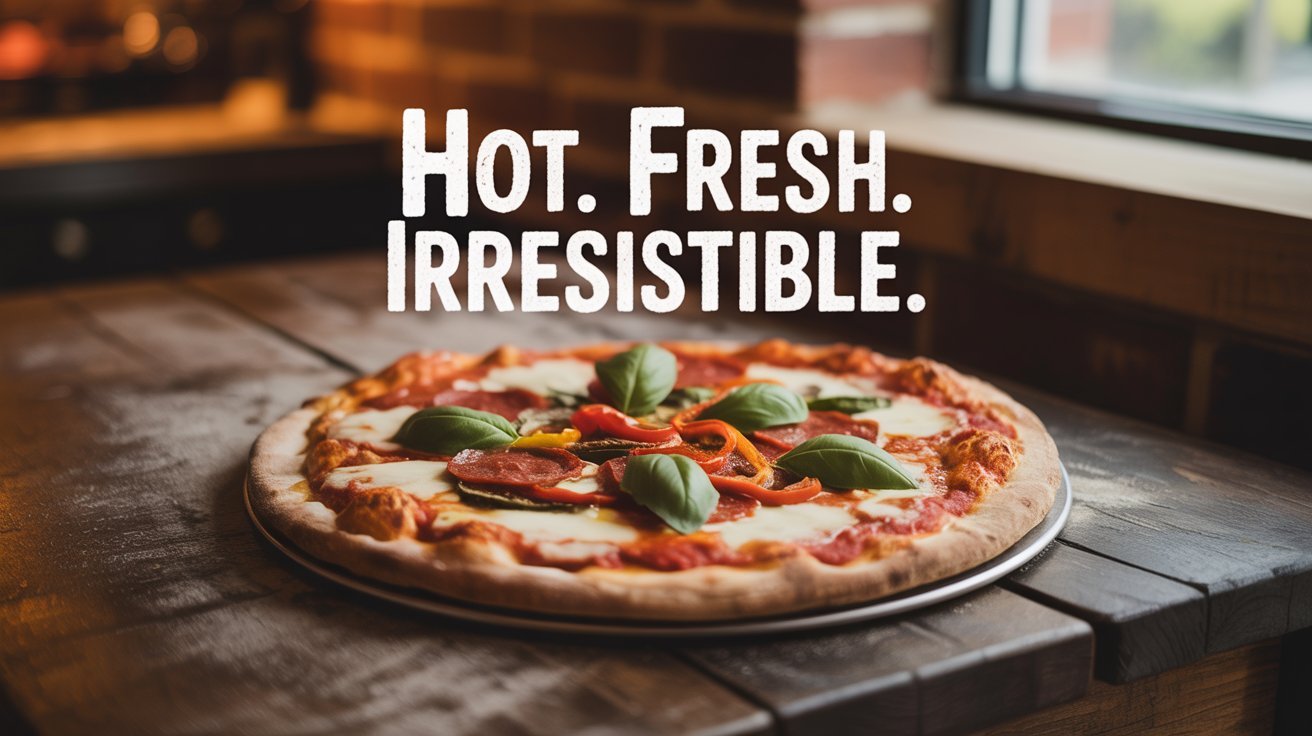The Pizza Edition: Discover the Ultimate and Delicious Slice Above the Rest
The Pizza Edition: A Slice Above the Rest celebrates the timeless love for pizza — from its humble beginnings in Naples, Italy, to its global evolution. This article explores how pizza became a worldwide favorite, adapting to cultures, ingredients, and innovations while staying true to its delicious roots.
Table of Contents
A Brief History of Pizza
Pizza has humble beginnings rooted in the streets of Naples, Italy, where it began as a simple street food for the working class. Flatbreads topped with ingredients were common in many cultures, but it was the Neapolitans who turned it into the tomato-and-cheese staple we know today. The Margherita pizza, with its patriotic trio of tomato (red), mozzarella (white), and basil (green), was created in honor of Queen Margherita in the late 1800s. Since then, pizza has traveled across oceans, morphing into countless variations along the way. From thin crust to deep-dish, from New York to Tokyo, pizza has become a global phenomenon—each place adding its own twist.
The Global Evolution of Pizza
As pizza spread from Italy to the rest of the world, it adapted to local tastes. In the United States, pizza took on regional characteristics: New York-style with its foldable slices, Chicago deep-dish loaded with toppings, and California-style known for its gourmet ingredients. Meanwhile, in Japan, you might find pizzas topped with squid or mayonnaise. In Brazil, green peas are a common topping. These regional twists speak to pizza’s versatility and its capacity to adapt while still delivering a universally loved experience. The pizza edition is different everywhere you go, reflecting not just food preferences, but culture and identity.
Ingredients that Make the Difference
At the heart of every great pizza is quality ingredients. The dough must strike the perfect balance between chewiness and crispness. The sauce, often overlooked, can make or break the flavor profile—it needs to be tangy, well-seasoned, and rich. Cheese, typically mozzarella, should melt evenly and add that classic stretch we all love. But what elevates a pizza from good to great are the toppings. Fresh vegetables, high-quality meats, and even unconventional ingredients like truffle oil or arugula can turn a simple pie into a gourmet experience. In the pizza edition of any reputable restaurant, ingredient sourcing is a top priority.
The Art of Dough Making
Dough isn’t just a base—it’s a craft. A great pizza starts with great dough, and that involves more than just flour and water. Fermentation time, type of flour, and kneading technique all impact the final product. Neapolitan pizza dough, for example, uses high-protein flour and undergoes a slow fermentation to develop flavor. Artisan pizzerias might even use sourdough bases to introduce complexity. The texture, flavor, and aroma of the dough set the stage for everything else. The pizza edition of a true pizza aficionado includes mastering this foundational element.
Wood-Fired vs. Conventional Ovens
Cooking method drastically influences the taste and texture of a pizza. Wood-fired ovens, which can reach temperatures of up to 900°F, cook pizzas in just 90 seconds, yielding a charred, smoky flavor and crispy crust with a tender interior. Conventional ovens, while more accessible, typically cap at 500°F and cook pizzas more slowly, resulting in a different texture. The pizza edition from wood-fired ovens has become a hallmark of artisanal pizza, offering a flavor profile that can’t easily be replicated in home kitchens.
Popular Pizza Styles Around the World
From Neapolitan and Sicilian to Detroit-style and St. Louis-style, each pizza variation has its own identity. Neapolitan is known for its simplicity and soft crust. Sicilian features a thick, fluffy base and is often baked in rectangular pans. Detroit-style is also rectangular but known for its crispy, cheesy edges and airy middle. St. Louis-style has a cracker-thin crust and uses Provel cheese—a processed blend that’s surprisingly polarizing. Then there’s Turkish pide, Indian naan pizza, and Middle Eastern manakish. The pizza edition of global cuisines reflects innovation while staying true to tradition.
Pizza and Pop Culture
Pizza isn’t just food—it’s a cultural icon. From the Teenage Mutant Ninja Turtles’ obsession with it to its starring role in countless movies and TV shows, pizza has a pop culture presence few foods can match. It’s a staple at parties, a go-to for late-night cravings, and a symbol of comfort. Social media has only amplified pizza’s fame. Instagram-worthy cheese pulls, TikTok pizza hacks, and YouTube reviews make pizza as much about the experience as it is about the flavor. The pizza edition in pop culture speaks to its universality and appeal across generations.
The Business of Pizza
The pizza industry is a multibillion-dollar sector encompassing everything from mom-and-pop shops to international chains like Domino’s and Pizza Hut. Franchising, online ordering, and delivery tech have all contributed to the industry’s growth. During the COVID-19 pandemic, pizza proved to be one of the most resilient food sectors, with many restaurants pivoting successfully to takeout and delivery models. Innovations like ghost kitchens and AI-powered pizza-making robots are shaping the next pizza edition of the business landscape. Despite changes, one thing remains constant: the demand for high-quality, convenient, and satisfying pizza.
Healthier Pizza Alternatives
While traditional pizza isn’t always diet-friendly, health-conscious alternatives are on the rise. Cauliflower crusts, gluten-free options, and vegan cheese have expanded pizza’s appeal. Whole-wheat and sourdough bases offer nutritional benefits, while plant-based toppings cater to modern dietary needs. Even fast-casual chains are embracing these options, allowing customers to customize healthier pies. The pizza edition of today’s health-conscious eater focuses on balance—enjoying the flavors without sacrificing nutritional goals.
The Future of Pizza
What does the future hold for pizza? Innovation in ingredients, preparation methods, and sustainability practices are all shaping the next chapter. Lab-grown meats, zero-waste kitchens, and AI-driven customization are already being tested. Meanwhile, the rise of global fusion pizzas—like tandoori chicken pizza or sushi pizza—reflects a growing appetite for culinary adventure. The pizza edition of tomorrow will likely be more personalized, more sustainable, and even more globally inspired.
Conclusion: Why Pizza Remains a Favorite
Pizza’s enduring popularity lies in its simplicity, versatility, and the joy it brings. Whether you’re a purist who sticks to Margherita or a risk-taker who piles on the pineapple and jalapeños, there’s a pizza for everyone. The pizza edition—be it traditional, regional, or revolutionary—continues to evolve while holding onto the core elements that made it beloved in the first place. A slice above the rest, indeed.
🍕 Frequently Asked Questions (FAQs) About The Pizza Edition
1. What is meant by “The Pizza Edition”?
“The Pizza Edition” refers to the many unique styles, techniques, and cultural interpretations of pizza found around the world. It celebrates how different regions and chefs put their own twist on this beloved dish.
2. Where did pizza originally come from?
Pizza originated in Naples, Italy, as a simple street food for the working class. Over time, it evolved into a global favorite with countless variations inspired by local ingredients and tastes.
3. What makes a pizza truly great?
A great pizza combines high-quality dough, flavorful sauce, fresh toppings, and proper baking. Balance and ingredient freshness are key—especially when it comes to the crust and cheese.
4. What’s the difference between wood-fired and conventional oven pizzas?
Wood-fired pizzas cook faster at high temperatures (around 900°F), giving them a crispy crust and smoky flavor. Conventional ovens take longer and produce a softer, less charred crust, but can still make delicious pies.
5. Which are the most popular pizza styles worldwide?
Some famous global styles include Neapolitan, New York-style, Chicago deep-dish, Sicilian, Detroit-style, and St. Louis-style. Each has its own unique crust, sauce, and topping traditions.
6. Is pizza considered healthy?
Traditional pizza can be high in calories, but healthier alternatives—like cauliflower crust, whole-wheat dough, and plant-based cheese—make it easier to enjoy pizza without guilt.
7. Why is pizza so popular across cultures?
Pizza’s popularity comes from its versatility and universal appeal. It can be adapted to any culture’s ingredients, making it a comforting, shareable, and endlessly customizable meal.
8. What does the future of pizza look like?
The future of pizza involves innovation and sustainability—think AI-powered pizza robots, zero-waste kitchens, lab-grown ingredients, and globally inspired fusion toppings.
9. Can I make restaurant-quality pizza at home?
Absolutely! With good-quality flour, fresh ingredients, and a hot oven (or pizza stone), you can create artisan-style pizzas that rival restaurant versions right in your own kitchen.
10. Why does pizza remain one of the world’s favorite foods?
Because it’s simple, satisfying, and endlessly adaptable. Whether you love a classic Margherita or a loaded deep-dish, pizza brings comfort and joy to people everywhere—truly a slice above the rest.
Read Also Our This Post: What Is an Ignition Interlock Device? Everything You Need to Know





